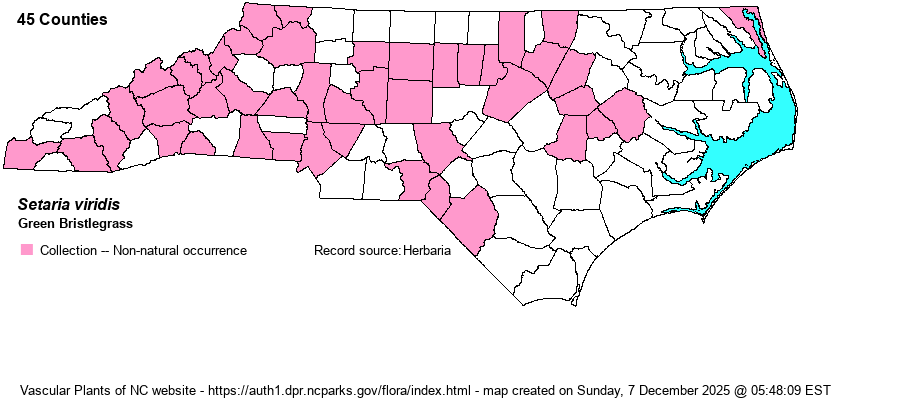| Author | (L.) Beauvois | |
| Distribution | Mostly Mountains, Piedmont, Sandhills, and inner Coastal Plain; rare in the outer Coastal Plain.
Native of Eurasia; in N.A. throughout the U.S. and southern Canada. | |
| Abundance | Fairly common to frequent throughout, except rare in the outer Coastal Plain. | |
| Habitat | Roadsides, fields, fallow fields, clearings, disturbed areas. | |
| Phenology | Flowering and fruiting July-October. | |
| Identification | There are only 1-3 bristles at the base of each spikelet. Unlike Foxtail Millet (S. italica), the upper lemma is transversely ribbed (vs. smooth). Unlike Japanese Bristlegrass (S. faberi), the leaves are scabrous on the upper surface (vs. soft hairy) and the inflorescence may be curved but does not nod. | |
| Taxonomic Comments | The inflorescences of bristlegrasses look like bottlebrushes, due to the numerous bristles that stick out sideways or that angle upward. Two of our 3 native species are annuals; S. parviflora is perennial. When using keys, make sure to have mature fruiting plants and a dissecting scope to see such features as the surface texture on lemmas, number of bristles per spikelet, etc. | |
| Other Common Name(s) | | |
| State Rank | SE | |
| Global Rank | GNR | |
| State Status | | |
| US Status | | |
| USACE-agcp | | |
| USACE-emp | | |

